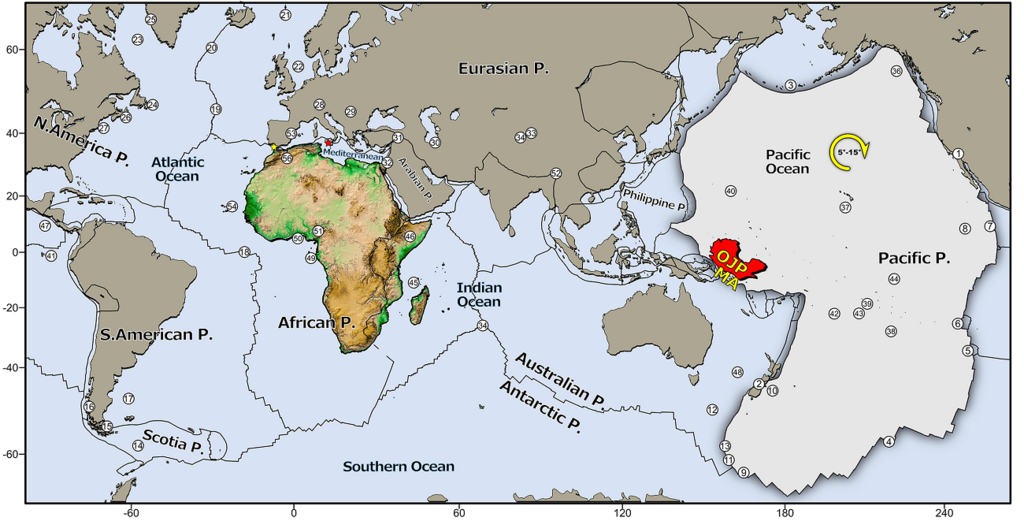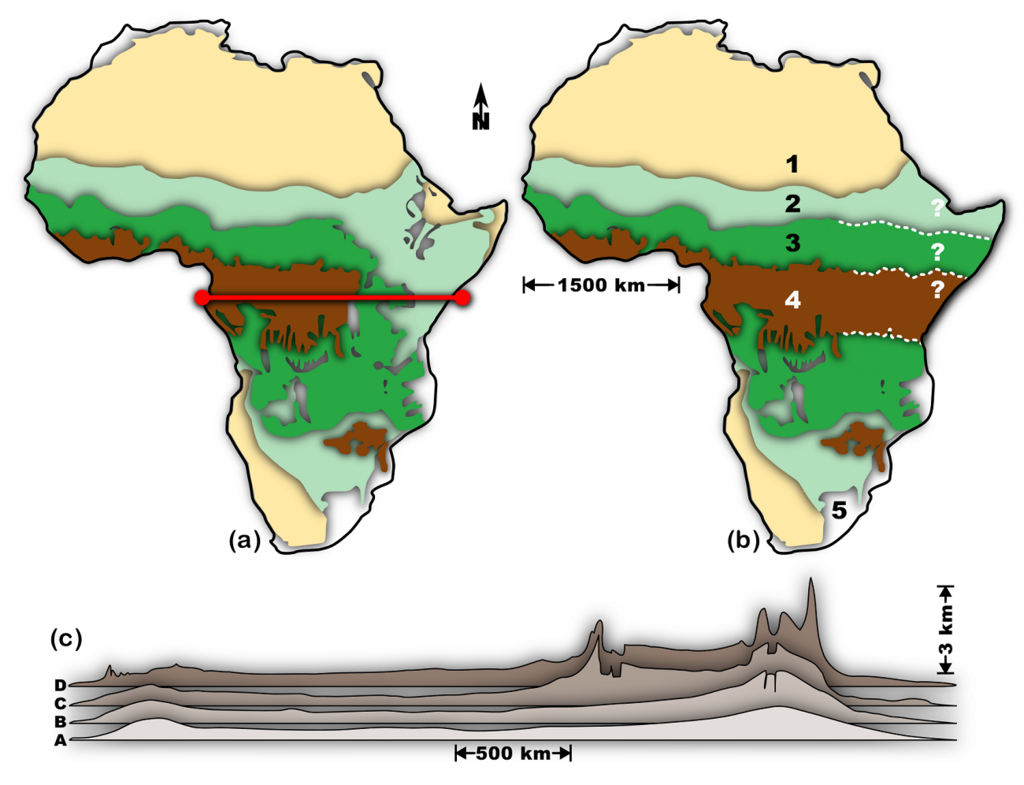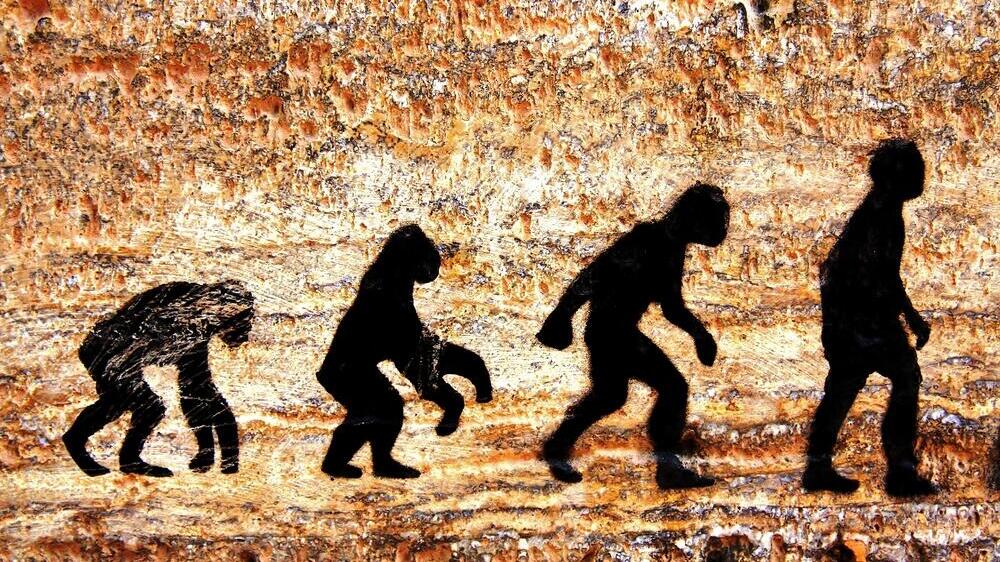Getting your Trinity Audio player ready...
A new study published in the Frontiers scientific journal offers an interpretation of the global events that led to the evolution of upright walking in early hominids in Africa around 6 million years ago.
Hominids living in the cradles of human evolution in southern and eastern Africa initially walked on all fours. However, through a series of significant physiological changes, their posture shifted to upright standing and bipedal walking. The main question is, what caused these hominids to fundamentally change their posture and gait?
Many studies have linked this critical transition to environmental, topographical, geomorphological and climatic changes that gradually transformed areas once covered by rainforests into expansive savannas. Nevertheless, the causal factor driving these environmental changes remained unknown, and it was unclear why they all took place at the same time.
The new study now offers a comprehensive and interdisciplinary solution to this question. The study was led by Professor Zvi Ben-Avraham from the Department of Geophysics at Tel Aviv University, along with Professor Joel Rak from the Department of Anatomy and Anthropology at Tel Aviv University, and Professor Uri Schattner from the School of Environmental Sciences at the University of Haifa, in collaboration with researchers from the University of California (UCLA) and the Oceanographic Institute in Trieste, Italy (OGS).
Their research showed that, within a very short geological time frame, the Pacific Ocean’s floor and the tectonic plate beneath it abruptly changed their movement direction by 5 degrees to 10 degrees clockwise. Since the Pacific Plate is the largest tectonic plate in the world (covering about 40% of the Earth's surface), this change in movement caused a significant tectonic shockwave that quickly spread worldwide, around 6 million years ago.
This shockwave destabilized many locations around the globe. "This wave of events caused mountain uplift, the separation of ecological niches, the closing of the Mediterranean Sea from ocean waters and its subsequent drying, and many other sudden changes that researchers reviewed at numerous sites,” Ben-Avraham explained.
3 View gallery


Illustration of the ripple tectonic concept. This resulted in a sudden 5°-15° clockwise rotation of the Pacific plate - largest on Earth.
(Illustration: Frontiers)
"When the rapid chain reaction reached East Africa, it accelerated the creation of the East African Rift, leading to the uplift of its surrounding environment, and thus causing extensive geological, geomorphological and habitat changes. Rift activity altered water drainage and created a mountainous landscape in areas of present-day Ethiopia, Kenya and Tanzania.” He added.
"My colleagues and I presented in our study the environmental, climatic, topographical and tectonic circumstances that led to the hominids’ drastic change in posture and behavior. This change paved the way for a series of adaptations that would have been impossible without the sharp changes that occurred in a relatively short time, including the freeing of hands for other functions and brain development. The tectonic shock in the Pacific Ocean triggered a tectonic butterfly effect that we defined in our study and managed to document its progression worldwide."
The hominids’ habitat changed drastically and suddenly, creating conditions that exceeded their usual adaptive capacity. The availability of food and water, as well as the presence of dangers, changed drastically. Therefore, according to the researchers, the hominids abandoned their previous evolutionary path and began a new one – developing upright posture and bipedal walking, which were more suitable for the new environmental conditions.
"The forests that turned into savannas led humans to stand on two legs and allowed them to see long distances. The changes were rapid and occurred in a very short geological time, requiring an expedited evolutionary adaptation. Until then, such extreme changes hadn’t occurred, so early humans didn’t need to go through such a significant change," Schattner explained.
3 View gallery


Schematic distribution of modern vegetation biomass according to the present topography
(Illustration: Frontiers)
In the modern era, where the world is experiencing extreme climate changes that are worsening over the years, the question arises whether we can expect changes similar to those that occurred millions of years ago.
Schattner clarifies that, although we can expect changes, the difference between the current era and that of early humans is that we now have technological means to adapt to environmental changes and postpone physiological changes, an option that didn’t exist for early hominids. "If we were in the same situation today as back then, there’s no doubt that our bodies would change in a very short time," Schattner said.
"The first humans appeared 8 million years ago, before which there were significant tectonic events but no humans. The event that occurred around 6 million years ago shows that the inability to adapt to those changes necessitated the transition from walking on all fours to standing upright. The core issue here is in the rate of processes. During that period, the rate of changes was very quick relative to humans' ability to adapt, resulting in the unusual physiological change that led to bipedalism today," Ben-Avraham concluded.


